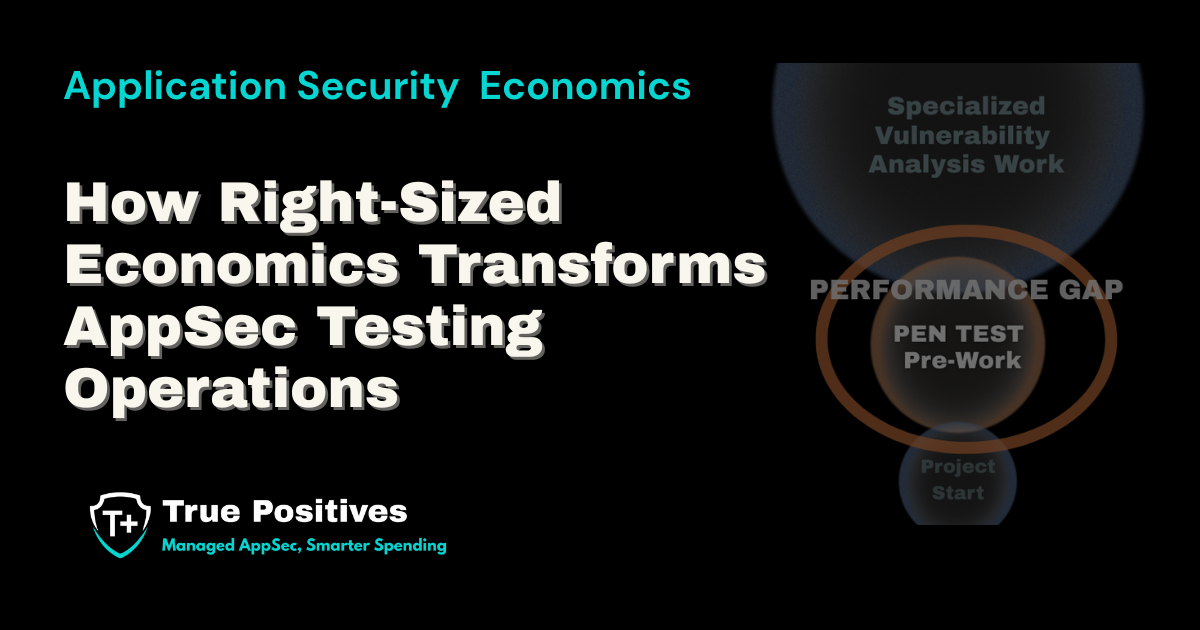Application Security Testing: Your Guide to Building an AST Program
In today's digital landscape, applications are the lifeblood of businesses, but they also represent a significant attack surface for cyber threats. A mature application security testing (AST) program is not just a nice-to-have, but an essential component of a robust security posture.
This comprehensive guide will outline the strategies, policies, and metrics necessary to build and maintain a mature AST program.
Why Application Security Testing Matters
Before diving into the specifics, it's important to understand the pivotal role that a mature application security testing plays in an organization's overall security strategy. A well-structured AST program offers a multitude of benefits that extend beyond simply finding and fixing vulnerabilities.
- Risk Reduction: Identifies and remediates vulnerabilities before they can be exploited by attackers.
- Regulatory Compliance: Helps organizations meet industry-specific security standards (e.g., PCI DSS, HIPAA)
- Customer Trust: Demonstrates a commitment to protecting sensitive data, bolstering brand reputation.
- Cost Savings: Prevents costly data breaches and downtime.
Key Components of an AppSec Testing Program
Building an application security testing program is like constructing a sturdy building – it requires a solid foundation and a well-defined structure. Let's break down the key components that make up this essential security framework:
Strategic Alignment
A successful AST program begins with clear strategic alignment. Without a defined direction and support from the top, security efforts can easily become fragmented and lose momentum.
- Clear Objectives: Define specific, measurable goals for the AST program. These might include reducing vulnerability severity, improving remediation time, or increasing code coverage.
- Executive Buy-In: Gain support from leadership to ensure adequate resources and prioritization of security efforts.
- Risk-Based Approach: Focus testing efforts on the most critical applications and vulnerabilities based on business impact.
Robust Policies and Procedures
Policies and procedures provide the guardrails that keep your AST program on track. They ensure consistency, clarity, and accountability throughout the security testing process.
- Security Testing Policy: Document the scope, frequency, and types of tests to be performed (e.g., static, dynamic, interactive).
- Vulnerability Management Policy: Establish clear processes for reporting, prioritizing, and remediating vulnerabilities.
- Secure Development Lifecycle (SDLC): Integrate security testing into every phase of the development process.
Comprehensive Testing Methodology
No single testing approach is sufficient to uncover all vulnerabilities. A mature AST program utilizes a multi-layered approach to ensure thorough coverage.
- Static Application Security Testing (SAST): Analyze source code for vulnerabilities without executing the application.
- Dynamic Application Security Testing (DAST): Simulate attacks on a running application to identify vulnerabilities.
- Interactive Application Security Testing (IAST): Combine SAST and DAST for comprehensive coverage and real-time vulnerability detection.
- toolsManual Penetration Testing: Leverage the expertise of security professionals to uncover complex vulnerabilities and validate the effectiveness of automated tools.
Tool Selection and Integration
Choosing the right tools and integrating them seamlessly into your workflow is crucial for the efficiency and effectiveness of your AST program.
- Evaluate and select AST tools that align with your organization's specific needs, budget, and technology stack.
- Integrate AST tools into your CI/CD pipeline for continuous testing and rapid feedback.
Metrics and Reporting
Metrics provide the insights needed to measure progress, identify weaknesses, and make informed decisions. Regular reporting ensures transparency and keeps stakeholders engaged.
- Key Performance Indicators (KPIs): Track metrics like number of vulnerabilities discovered, time to remediation, and false positive rate to assess program effectiveness.
- Regular Reporting: Generate reports for both technical teams and management to communicate progress and identify areas for improvement.
Strategies for Building Maturity
Maturing your AST program is an ongoing process that requires continuous effort and adaptation. Employing the right strategies can accelerate this journey and maximize the value you get from your security investments.
- Continuous Improvement: Regularly assess the AST program against industry benchmarks and best practices.
- Training and Awareness: Educate developers on secure coding practices and security professionals on emerging threats.
- Automation: Automate repetitive tasks like scanning and reporting to increase efficiency and reduce human error.
- Collaboration: Foster collaboration between development, security, and operations teams for a holistic approach to application security.
Common Challenges to Building a Mature AppSec Testing Program
Every AST program encounters obstacles along the way. Recognizing these challenges and having strategies in place to overcome them is essential for long-term success.
- Resistance to Change: Clearly communicate the benefits of AST and involve developers early in the process.
- Limited Resources: Start with a focused approach, prioritize critical applications, and leverage automation.
- False Positives: Fine-tune AST tools and leverage threat intelligence to reduce noise.
- Inadequate Remediation: Establish clear processes for prioritization and tracking, and provide developers with guidance on remediation.
By proactively addressing these common obstacles—resistance to change, limited resources, false positives, and inadequate remediation—organizations can unlock the full potential of AST and build a more secure software development lifecycle.
Measuring the Success of Your Application Security Testing Program
To determine whether your AST program is delivering the desired results, you need to measure its effectiveness. A combination of quantitative and qualitative metrics can provide a comprehensive picture of your program's impact.
The effectiveness of your AST program can be measured through a combination of quantitative and qualitative metrics:
Quantitative Metrics:-
- Reduction in the number and severity of vulnerabilities over time
- Improved time to remediate vulnerabilities
- Increased code coverage by security testing tools
- Decrease in the number of security incidents related to applications
- Qualitative Metrics:
- Increased awareness of security risks among developers and stakeholders
- Improved collaboration between security and development teams
- Stronger security posture and reduced risk of data breaches
By consistently tracking and analyzing a balance of these metrics, organizations can gain valuable insights into the strengths and weaknesses of their AST programs, identify areas for improvement, and ultimately achieve their goal of developing and delivering more secure software applications.
Building an AppSec Testing Program – Final Thoughts
Building a mature application security testing program is an ongoing journey. It requires strategic planning, comprehensive testing, robust policies, and continuous improvement. By investing in AST, organizations can protect their applications, data, and reputation from the ever-evolving threat landscape.
If you want help getting start building a robust AppSec strategy for your organization or scaling your team, talk with us at True Positives today.
.jpg)
Brian Pavicic
Brian Pavicic founded True Positives to deliver comprehensive application security testing through cost-effective AppSecVar and managed service solutions. As an early member of @stake, he contributed to the development of modern application security practices. Over the past decade, Brian has focused on integrating automated tools with expert manual inspection to help organizations build digital trust efficiently and effectively.



